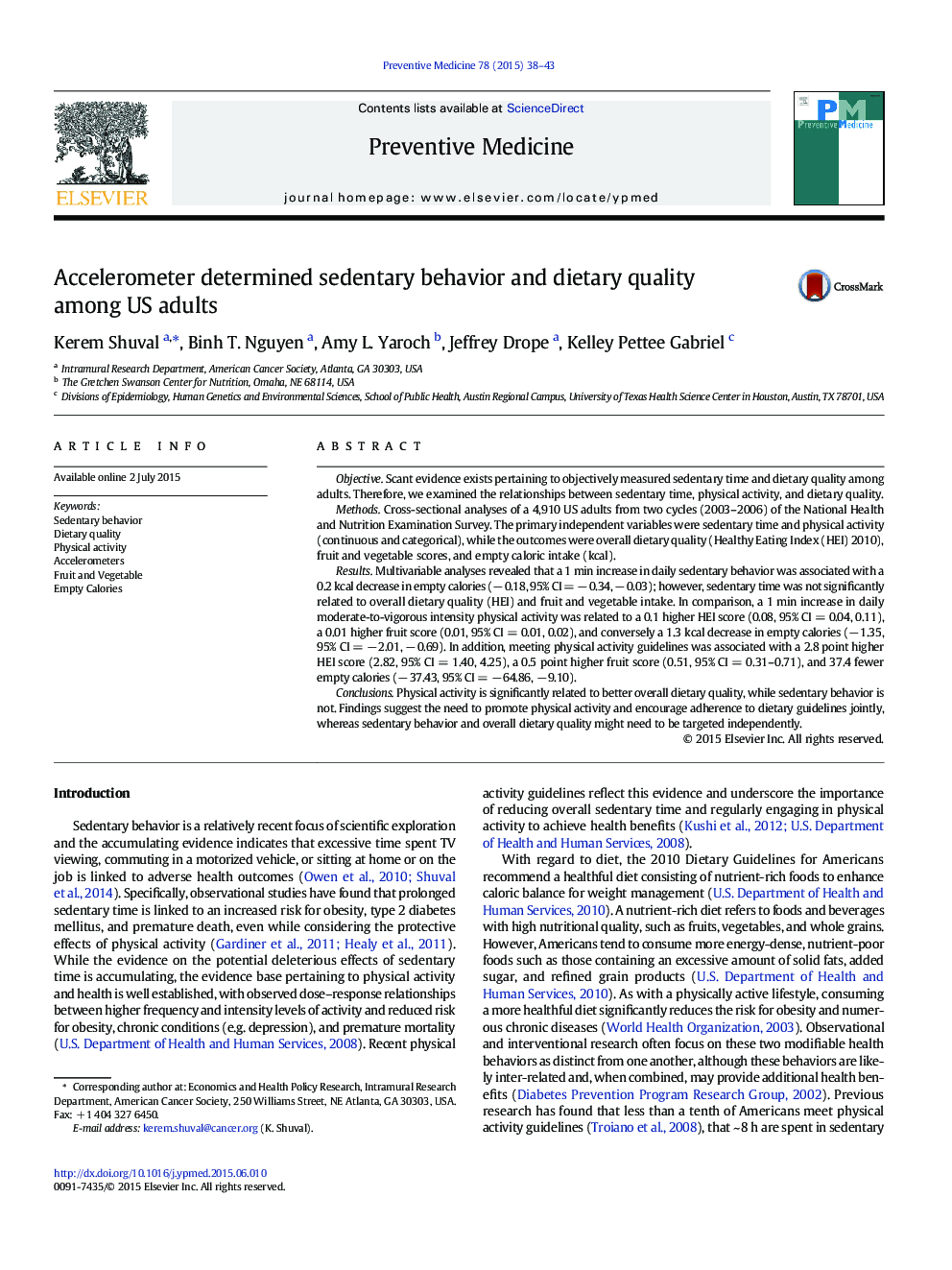| Article ID | Journal | Published Year | Pages | File Type |
|---|---|---|---|---|
| 3100406 | Preventive Medicine | 2015 | 6 Pages |
•Scant evidence exists pertaining to the relationship between sedentary time and diet.•Accelerometry used to assess in/activity in a national sample of US adults.•Sedentary time was not associated with overall dietary quality.•Physical activity related to a better dietary quality and fruit intake.
ObjectiveScant evidence exists pertaining to objectively measured sedentary time and dietary quality among adults. Therefore, we examined the relationships between sedentary time, physical activity, and dietary quality.MethodsCross-sectional analyses of a 4,910 US adults from two cycles (2003–2006) of the National Health and Nutrition Examination Survey. The primary independent variables were sedentary time and physical activity (continuous and categorical), while the outcomes were overall dietary quality (Healthy Eating Index (HEI) 2010), fruit and vegetable scores, and empty caloric intake (kcal).ResultsMultivariable analyses revealed that a 1 min increase in daily sedentary behavior was associated with a 0.2 kcal decrease in empty calories (− 0.18, 95% CI = − 0.34, − 0.03); however, sedentary time was not significantly related to overall dietary quality (HEI) and fruit and vegetable intake. In comparison, a 1 min increase in daily moderate-to-vigorous intensity physical activity was related to a 0.1 higher HEI score (0.08, 95% CI = 0.04, 0.11), a 0.01 higher fruit score (0.01, 95% CI = 0.01, 0.02), and conversely a 1.3 kcal decrease in empty calories (− 1.35, 95% CI = − 2.01, − 0.69). In addition, meeting physical activity guidelines was associated with a 2.8 point higher HEI score (2.82, 95% CI = 1.40, 4.25), a 0.5 point higher fruit score (0.51, 95% CI = 0.31–0.71), and 37.4 fewer empty calories (− 37.43, 95% CI = − 64.86, − 9.10).ConclusionsPhysical activity is significantly related to better overall dietary quality, while sedentary behavior is not. Findings suggest the need to promote physical activity and encourage adherence to dietary guidelines jointly, whereas sedentary behavior and overall dietary quality might need to be targeted independently.
